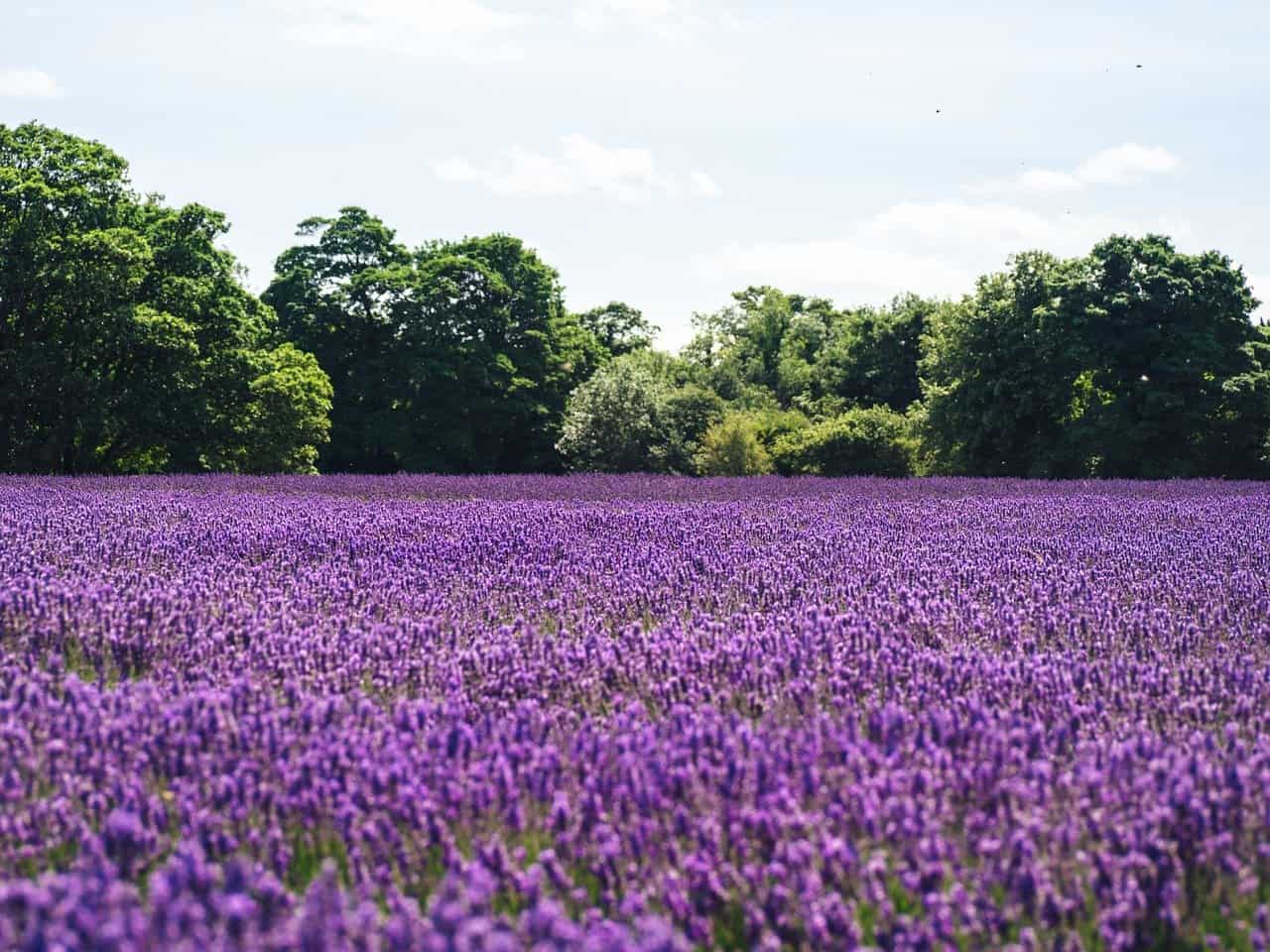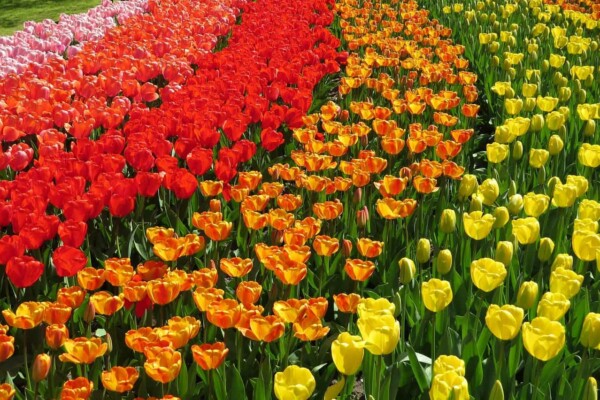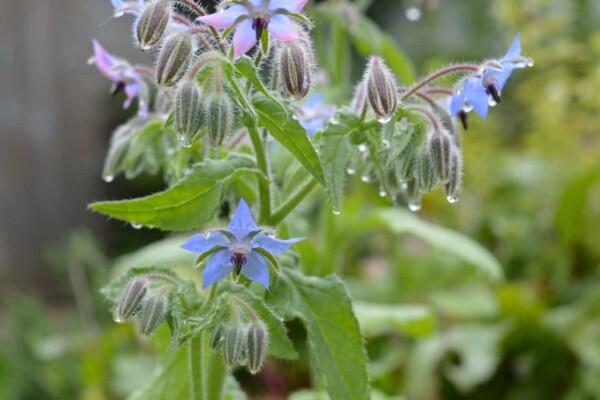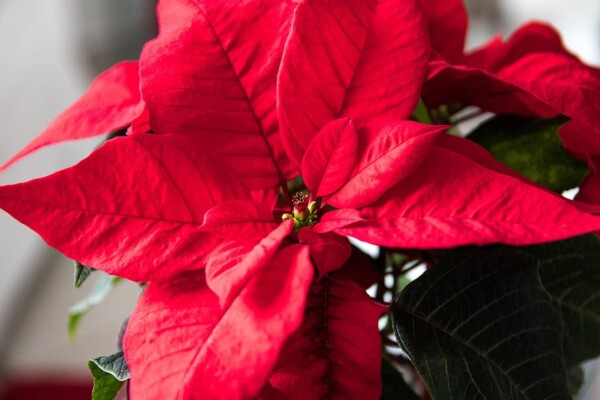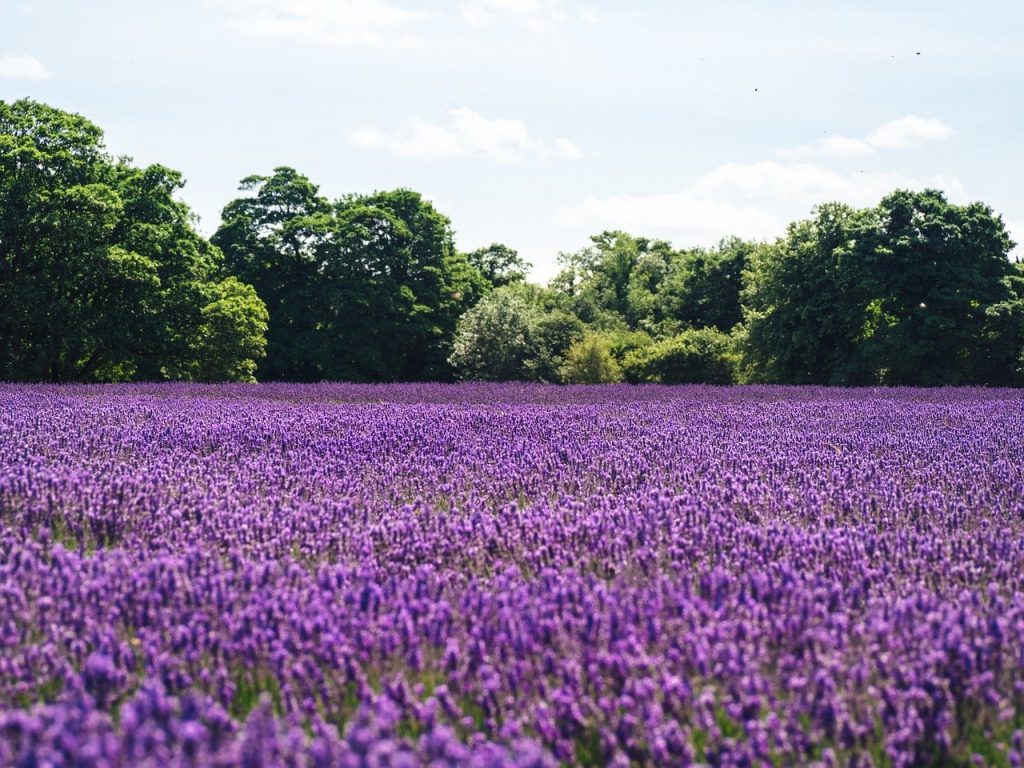
Lavender is a durable, easy-to-maintain plant that can bring in a lot of money, even if it’s grown only on restricted surfaces. Lavender is a perennial shrub that is part of the Lamiaceae family. It has evergreen leaves, usually green-silver. It reaches maturity in 2-5 years and lives 40-50 years on average. In Western Europe, however, there are 80-100-year-old lavender plantations and some of them have become famous for their lavender fields.
The scientific name of the plant “Lavandula” derives from the Latin “lavare” which means “to wash”. In ancient Greece, Persia, and Rome it was used as a bath perfume and antiseptic. In Buddhist and Tibetan medicine it’s used to treat psychosis and insanity, while in Europe and America, it is used to fight against anxiety and insomnia. Originally from the Mediterranean area, south-east India and tropical Africa, today lavender grows spontaneously or is grown on large areas, to be used especially in the beauty industry but also in the pharmaceutical industry to produce all kinds of plant-based medicines.
Where does lavender grow?
Lavender is a native plant to dry climates like those found in the Mediterranean regions. All species are usually grouped into four main subgenera which consist of a vast number of hybrids that have been cultivated for specific purposes and to help them adapt to various climates all around the world. These subgenera are the following:
- Lavandula angustifolia – English lavender hybrids;
- Lavandula stoechas – French lavender hybrids;
- Lavandula dentata – Spanish lavender hybrids;
- Lavandula multifida – Egyptian lavender hybrids.
Without any doubt, the most popular lavender hybrids are the English and the French ones, especially for their properties that make them useful in various industries.
The great thing about lavender is that it easily adapts to almost any type of climate. In the same time, it doesn’t require a big amount of work to obtain a consistent yield. Once a lavender culture is established, even on smaller-sized fields, it’s a great pollinator plant that produces bright blossoms that make it a great addition to any garden or for landscaping purposes. Not to mention that lavender honey is also very much appreciated by connoisseurs.
Lavender is very much drought-resistant and thanks to the essential oil it produces, it repels all kinds of pests and insects on its own because of the strong scent.
When starting a lavender plantation keep in mind to provide the following so that the plants can fully develop: heat, water, space and having lean soil. Cold or humid weather is not ideal, considering that the plant originates from arid climates in France, Italy or Spain.
Farmers living in a region with long and hot summers should arrange to provide slight shade during the peak heat of the day. Also, having enough space between plants aids with the air circulation that they need and to prevent humidity from damaging them. If the plants are grown in a humid climate then this ensures the perfect environment to develop all kinds of diseases that influence the quality of the yield.
Lavender needs water, just like any other plant, but not in excess. Stone mulch can be used for cultures in humid climates because it absorbs the excess water and it dries fast.
On the other hand, farmers that cultivate the plant in colder climates need to provide the plants with some extra care, like storing them in containers and bringing them into a shelter during the winter months. English lavender hybrids are most suitable for growing in such colder climates, while the Spanish lavender is more suitable for very dry climates.
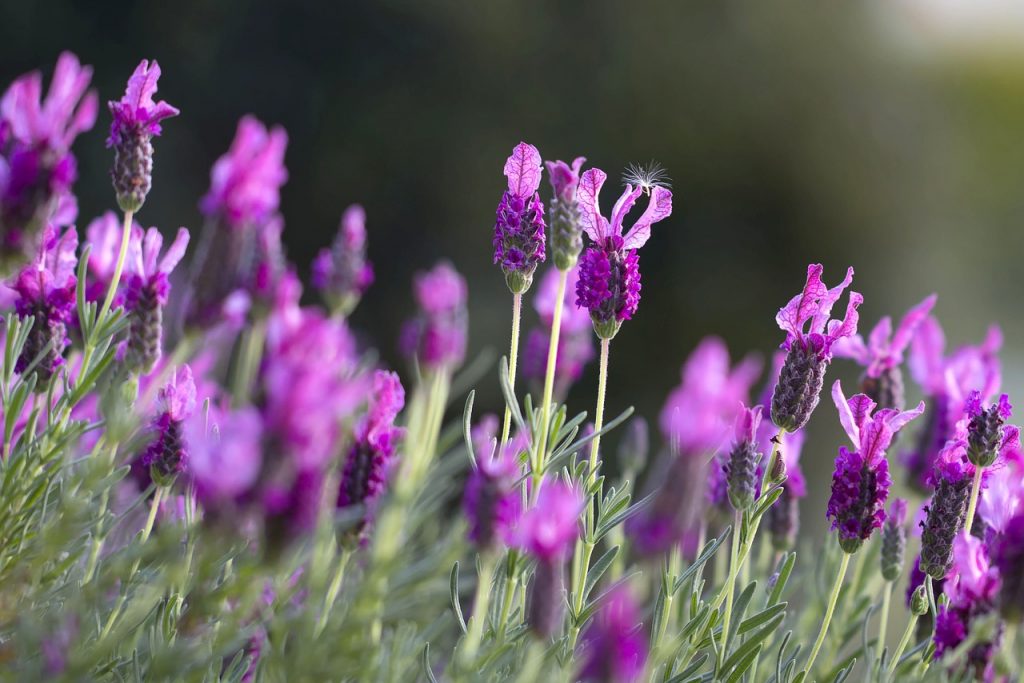
Most profitable lavender varieties
When choosing which type of lavender to grow, it all depends on the climate and the purpose of the plantation. The plant has so many uses that it’s possible to find the best market niche depending on your region if you want to start a lavender plantation.
English lavender is a great option, especially because it also grows in colder climates. The foliage of English lavender is grey, while the flowers can have any shade between white and purple. Buena Vista, Folgate and Hidcote are some of the most popular English varieties. Buena Vista has beautiful flowers, often grown for the fresh-cut market, Folgate produces a high quantity of essential oil and Hidcote is perfect for flower arrangements and dried displays.
Another type of lavender that is popular among many farmers is Lavender X intermedia. This species is a cross between Lavendula augustifolia and Lavendula latifolia. It is also referred to as lavendins. The varieties of this plant family flower later than “true lavenders”, they produce large plants and a very high oil concentration used to make essential oils.
Of all the varieties, the Grosso one is considered to be the widely planted of all lavender varieties in the world because it has an extremely high oil concentration.
Gros Blue is a French lavender variety that is commonly used for bouquets or it’s used in sachets and other scented products because the flowers are large and have vibrant colors.
For aromatherapy products and soap making, Super is one of the most common lavender varieties used in the cosmetic industry. It has high oil content and a very pleasant scent.
Planting lavender – soil requirements and techniques
An ideal soil for growing lavender is one made up of 45% minerals (sand, mud, and clay), 5% organic matter and 50% porous space. This space contains the oxygen and water needed to grow the plant, hence the lean soil mentioned earlier.
To grow, lavender needs soil with a pH of about 7.0 that is well-drained. To reach the right pH several substances can be added, but with caution (for example, lemon if it’s too acidic and sulfur if it’s too alkaline). To ensure drainage, sand or gravel can be added. The lavender cuttings can be planted into hotbeds or the soil can be improved with organic mulch or even with stones if the climate is humid.
Generally speaking, regardless of whether the plants will grow from seeds or cuttings, they are placed in rows at a distance of 40-65 centimeters, depending on the variety. The distance between rows can vary between 120 and 150 centimeters. If the lavender is planted in soil at a high altitude, the plants must be placed closer to each other to be protected from the wind. In humid conditions, it is best to leave a greater distance to allow air to circulate, so that fungal infections are avoided. Most farmers prefer to use cuttings instead of seeds to grow new plants because they can ensure consistency in the quality of the yield in terms of color and oil production.
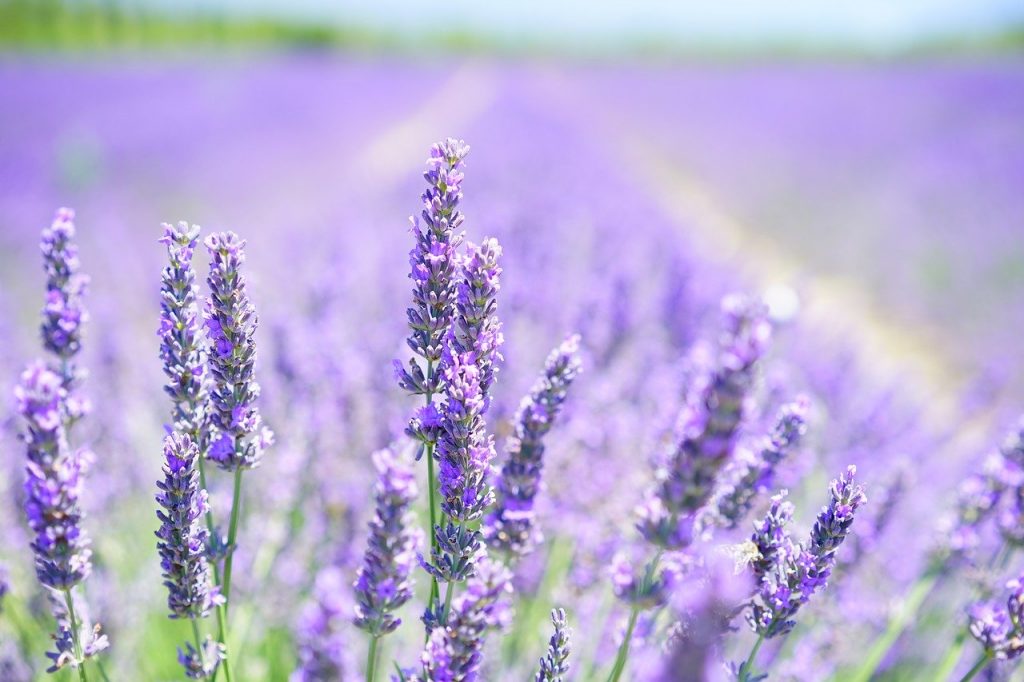
Maintenance work for a lavender plantation
After the lavender has been planted, you will need to consider a few things for the plant to grow, from watering to maintenance cuts and ways to fight diseases and pests. Although the plant is not difficult to grow, it doesn’t mean that it can grow well on its own.
Freshly planted lavender, from seeds or cuttings, will need more water than the mature plant to develop a strong root system. After about two years, mature plants can only live with water from rainfall if annual precipitation exceeds 450 millimeters / square meter.
In areas where there is no heavy rainfall, it is advisable to invest in an irrigation system. If the plant does not receive enough water during the flowering period, the buds will not develop. In very hot and rain-free areas, 3-4 irrigation sessions in the summer months are recommended. In other cases, you can install a drip irrigation system to use for 20 minutes, once a week.
Drip irrigation is recommended since flowers can be damaged if other irrigation methods are used. Moreover, because lavender roots rot easily and are prone to fungal infections, irrigation is recommended only when the soil is dry.
Maintenance cuts are necessary for growing and protecting the plant. The first cutting should be done in the first growing season, when the first buds bloom, to help the plant grow. Later, cutting is required once a year.
You can cut the plant in the spring, but usually, maintenance cutting is done towards the end of summer or at the beginning of autumn, after harvesting. Especially for varieties grown for oil (where only the flowers are harvested), only about a quarter of the plant is cut, but without reaching its woody side.
Ways of propagating lavender
Once the plants have reached maturity, if you want to expand your lavender plantation you have two options:
- Hardwood – by cutting the woody stems, which can be done both in spring and autumn;
- Softwood – by cutting the soft, upper part of the plant, this can only be made in the spring.
For the cuttings to take strong roots and then turn into lush lavender bushes, follow these steps:
- Regardless of the type of cuttings, choose healthy, straight and non-budding plants;
- Use a sharp knife to cut stems 7 to 10 centimeters long. For hardwood, cut firmly under a bulge that indicates a leaf knot;
- Cut the leaves from a 5 cm portion at the bottom of the stem and scrape a portion from the side that you will insert into the ground;
- Prepare a container that you fill half with peat moss and a little bark for drainage and the other half with vermiculite or pearlite.
- You can soak the stems in a rooting stimulant that encourages rapid root growth, without allowing them to rot;
- Put the stems about 5 centimeters into the mixture and press it well to keep the stem straight;
- Cover the entire container with a plastic foil to create a greenhouse effect for cuttings;
- Softwood cuttings will grow roots in about two to four weeks, and for hardwood, it will take a little longer;
- After they have taken root, you can transplant them into the ground.
How do you know when it’s time to harvest the lavender?
In general, lavender is harvested in the summer, when the buds have formed, but not all flowers have opened yet. To select the best harvest day, consider choosing a sunny and windless one; if it rains that day or even two-three days before, the quality of the final product will decrease. Extreme heat or strong wind can favor the evaporation of the essential oil, so you will lose some of the harvests.
If you harvest lavender for oil production, you will need to do it 5 to 10 days before flowering. In this case, you will also need some extra equipment.
Lavender oil is extracted from the plant by using the distillation method, a process that produces both the lavender oil and the lavender hydrosol. Lavender hydrosol is also valuable because it contains a small amount of the oil and the water-soluble parts of the plant, that are used to make scented products, usually home fragrances.
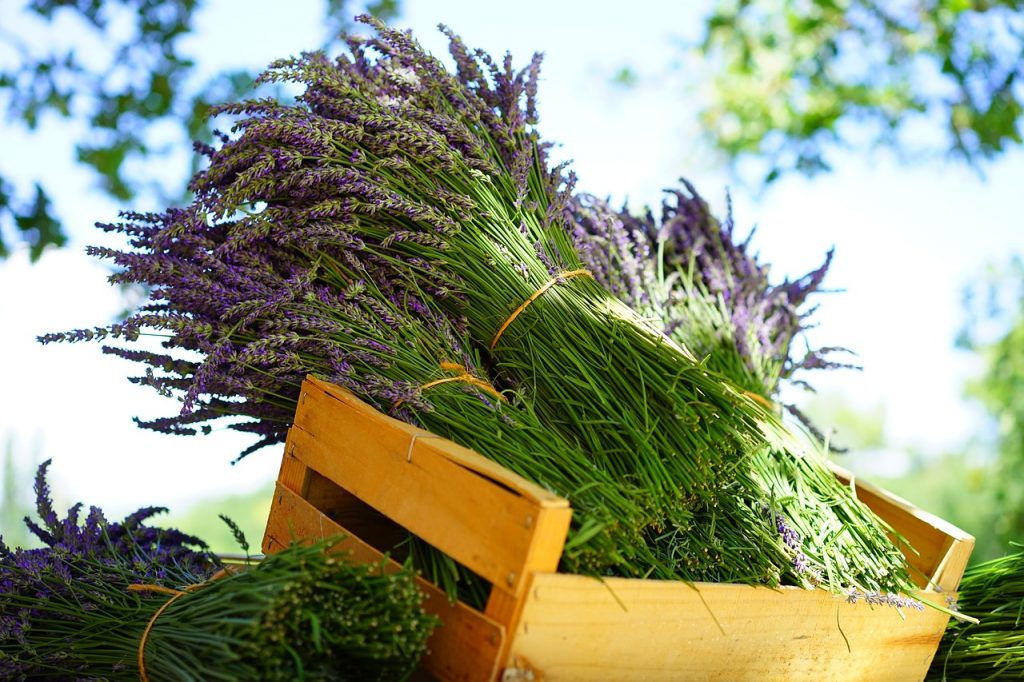
How can you capitalize on a lavender culture?
There are several ways you can make profit from a lavender culture but take into consideration that each involves different harvesting modes or even extra equipment, as mentioned above in the case of essential oil.
Cuttings: Once lavender has reached maturity, it will produce hundreds of stems that can be transformed into cuttings every year. After they have taken root, you can sell them to other farmers who want to grow lavender or for hobby gardeners that want to add the plant into their home gardens. If the cuttings are more developed, the price will increase.
Essential oil: To produce oil you will also need a distillation boiler to extract it. Depending on the quality of the oil obtained, the price can be lower or higher.
Dried lavender: This is sought after for pharmaceutical purposes, for teas, but also various natural remedies. You will need a special space suitable for drying the plants, which should be clean, airy and have enough shade.
There is also the option to make your own products and to sell them in markets and fairs: teas, soaps, tinctures, lavender sachets and dried lavender bouquets.
Success stories
Lavender is so important for many businesses that it has become somewhat of a trademark for them. For example, the famous English Yardley products (especially the soaps) have become famous partially due to the quality of the lavender used to make them. The House of Yardley was established in 1770 and since then lavender has become their signature scent. In 1930, the company commissioned a team of scientists to study the most sought out varieties, which led to the discovery of the English lavender variety. This variety is still grown in England and other parts of the world and forms the basis of Yardley’s signature range.
Another company that grows its own lavender plantation to incorporate into its products is the French-based Yves Rocher company. Their fields in Provence are now visited by fans of the brand from all over the world. They also use the English lavender variety, which comes from their own fields and other French growers.
A lavender plantation can be very profitable if you pay attention both to the field in which you are going to plant it (soil, climate) but also to the maintenance works (watering, cutting, eliminating pests). If you know how to capitalize on the plants, through oil, cuttings or dried flowers, you will regain the initial investment and you will start to make a profit even from the fourth year after planting.
Contents

